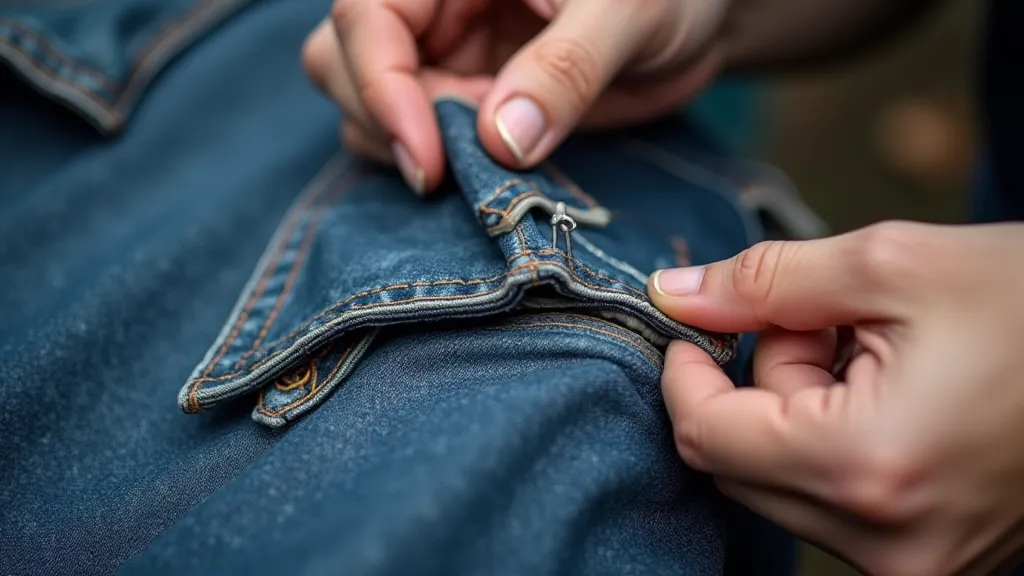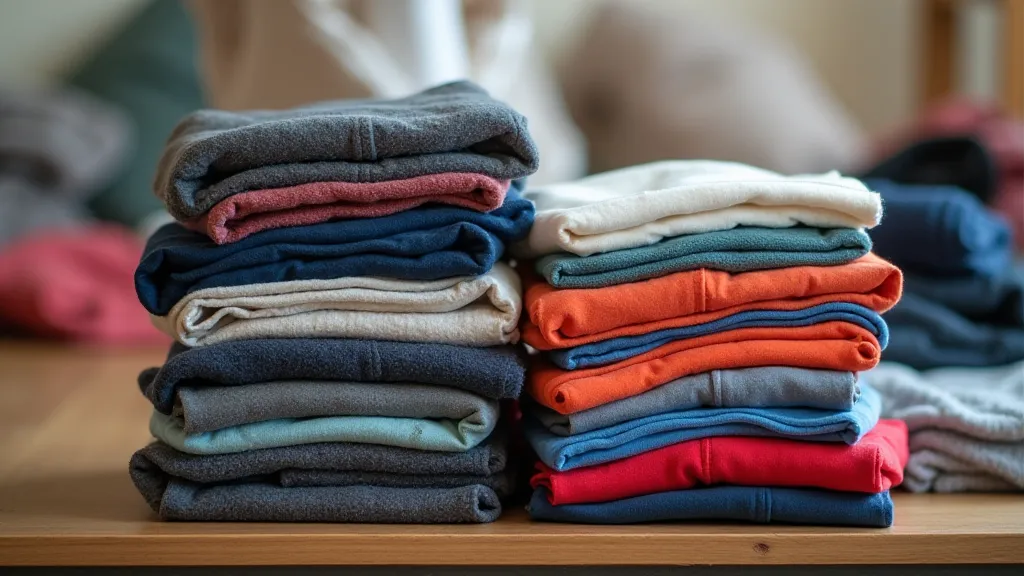Sustainable Fashion: Building an Eco-Friendly Wardrobe
The fashion industry has a significant environmental impact, from resource depletion and pollution to textile waste. Thankfully, building a sustainable and eco-friendly wardrobe doesn't require a complete overhaul. It’s about making conscious choices and rethinking your relationship with clothing. This guide provides practical tips for transforming your style while minimizing your footprint. It's a journey that aligns with a broader commitment to responsible living, and extends to other areas like how we travel and care for our homes. As you consider your fashion choices, remember that incorporating sustainable practices is often tied to a desire for a more fulfilling and less wasteful life – one that embraces mindful consumption and a reduced carbon footprint.
Understanding the Problem: Fast Fashion's Toll
Fast fashion, with its constant stream of trendy and cheap clothing, encourages overconsumption and contributes to a cycle of waste. Think about it – how often do you buy new items, and how often do they end up discarded after just a few wears? The production of these garments often involves unsustainable practices, harmful chemicals, and unethical labor conditions. The sheer volume of textile waste generated is staggering, impacting landfills and contributing to environmental pollution. Beyond the immediate impact, fast fashion’s reliance on synthetic materials releases microplastics into our waterways, further damaging ecosystems. Fortunately, there's a better way!

Embrace Thrifting and Secondhand
Thrifting is arguably the easiest and most accessible entry point into sustainable fashion. Shopping at thrift stores, consignment shops, and online marketplaces like Depop and Poshmark gives clothes a second life, diverting them from landfills and reducing the demand for new production. It's also a fantastic way to find unique and affordable pieces! Don't be afraid to get creative – a little alteration or styling can transform a secondhand find into a truly one-of-a-kind outfit. The circular economy model championed by thrifting is essential for reducing waste and promoting responsible consumption, a concept that resonates with minimizing our overall impact – perhaps even extending to how we tackle waste in other areas of our lives, as explored in The Alchemist's Hearth: Transforming Waste into Resourceful Grace.
Choosing Sustainable Fabrics
When purchasing new clothing, prioritizing sustainable fabrics is key. Here's a breakdown of some excellent choices:
- Organic Cotton: Grown without harmful pesticides and fertilizers, reducing environmental impact.
- Linen: Made from flax plants, linen requires less water and pesticides than cotton.
- Hemp: A remarkably durable and eco-friendly fiber that grows quickly and requires minimal resources.
- Tencel (Lyocell): Made from sustainably sourced wood pulp, Tencel is soft, breathable, and produced in a closed-loop system that minimizes waste.
- Recycled Materials: Look for clothing made from recycled polyester (rPET), recycled nylon, or other recycled fibers.
Avoid synthetic fabrics like polyester and nylon, which shed microplastics into waterways during washing. The environmental impact of synthetic fabrics extends beyond their production; their breakdown releases harmful substances into the environment, contributing to broader pollution issues that affect everything from our oceans to our homes.
Extending the Life of Your Clothes
It’s not just about *what* you buy, but also about how you care for it. Here's how to make your clothes last longer:
- Wash Less: Over-washing damages fabric and wastes water and energy. Spot clean when possible and air out clothes between wears.
- Wash Cold: Cold water uses less energy and helps prevent color fading.
- Line Dry: Tumble drying can damage fabric and consume a lot of energy. Line drying is a gentle and eco-friendly alternative.
- Repair and Mend: Learn basic sewing skills to repair minor tears and replace buttons. A little effort can significantly extend the life of a garment.
- Upcycle: Get creative and repurpose old clothing into new items. Turn old t-shirts into tote bags or denim scraps into patchwork quilts.
The conscious effort involved in extending the lifespan of our clothes mirrors a broader commitment to responsible living – a commitment that permeates many aspects of our lives, from how we manage our homes to how we minimize our travel footprint, as detailed in Eco-Friendly Home Products: A Comprehensive Guide to Sustainable Choices.

Beyond Buying: Responsible Disposal
When clothing is truly beyond repair or reuse, dispose of it responsibly. Don’s just throw it in the trash! Consider these options:
- Textile Recycling: Some communities have textile recycling programs that can process old clothing into new materials.
- Donation: Donate usable clothing to charities or organizations that support those in need.
- Clothing Swaps: Organize a clothing swap with friends or community members to exchange unwanted items.
Reducing waste and finding creative solutions for unwanted items is a core principle of sustainable living. This extends beyond our wardrobes and into other areas where we seek to minimize our environmental impact, such as reducing our carbon footprint through mindful consumption and transportation choices, as discussed in Reducing Your Carbon Footprint: Actionable Steps for a Greener Future.

The Broader Context of Sustainable Living
Building a sustainable wardrobe isn’s just about clothing; it's a reflection of a larger lifestyle shift towards conscious consumption and environmental responsibility. It’s about recognizing the interconnectedness of our choices and their impact on the planet. Fast fashion’s detrimental effects are only one facet of a larger problem, and tackling it requires a holistic approach – from examining our purchasing habits to supporting ethical and sustainable businesses. The effort involved goes beyond fashion and into the way we live our daily lives.
Deep Dive into Sustainable Fabrics
Let's take a closer look at some of the key sustainable fabric choices mentioned earlier:
- Organic Cotton: While cotton is a natural fiber, conventional cotton farming relies heavily on pesticides and fertilizers. Organic cotton is grown without these harmful chemicals, protecting ecosystems and the health of farmers. Look for certifications like GOTS (Global Organic Textile Standard) to ensure authenticity.
- Linen: Made from the flax plant, linen is incredibly durable and requires significantly less water than cotton. It also doesn't need pesticides, making it a truly eco-friendly option. Plus, its breathability makes it perfect for warm weather.
- Hemp: Hemp is a powerhouse of sustainability. It grows quickly, requires minimal water and pesticides, and its strong fibers create long-lasting garments. It also sequesters more carbon dioxide from the atmosphere than trees!
- Tencel (Lyocell): Tencel is a revolutionary fabric made from sustainably sourced wood pulp. The production process uses a closed-loop system that recycles water and solvents, minimizing waste. It’s also incredibly soft and comfortable to wear.
- Recycled Polyester (rPET): rPET is made from recycled plastic bottles, diverting waste from landfills and reducing the need for virgin polyester. It’s a great option for activewear and outerwear.
Tips for Building a Capsule Wardrobe
A capsule wardrobe is a curated collection of versatile clothing items that can be mixed and matched to create a variety of outfits. This approach minimizes the need for constant purchasing and encourages mindful consumption. Here are some tips for building a capsule wardrobe:
- Identify Your Style: What colors, silhouettes, and fabrics do you feel confident and comfortable in?
- Choose a Neutral Color Palette: This will make it easier to mix and match items.
- Invest in Quality Basics: These are the foundation of your capsule wardrobe.
- Add a Few Statement Pieces: These will add personality and flair to your outfits.
- Shop Secondhand: This is a great way to find unique and affordable items.
The Future of Sustainable Fashion
The fashion industry is undergoing a significant transformation as consumers become more aware of its environmental and social impact. Innovations in materials, production processes, and business models are paving the way for a more sustainable future. We're seeing the rise of:
- Circular Fashion: Designing clothes to be reused, repaired, or recycled.
- Traceability: Knowing the origin and production methods of clothing.
- Transparency: Sharing information about supply chains and labor practices.
Small Changes, Big Impact
Building a sustainable wardrobe is a journey, not a destination. Start with small changes – thrift one item a month, choose a more sustainable fabric for your next purchase, or learn a simple repair technique. Every conscious choice you make contributes to a more ethical and environmentally friendly fashion industry.





